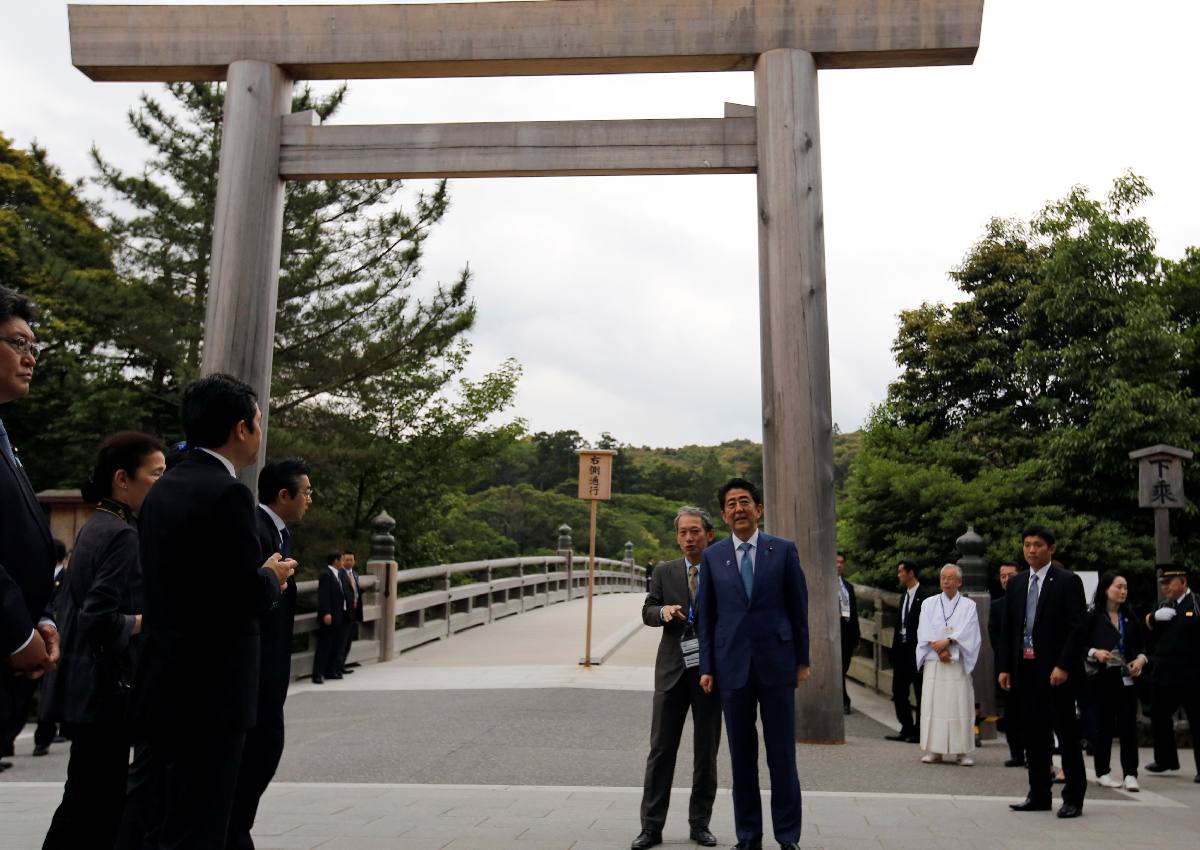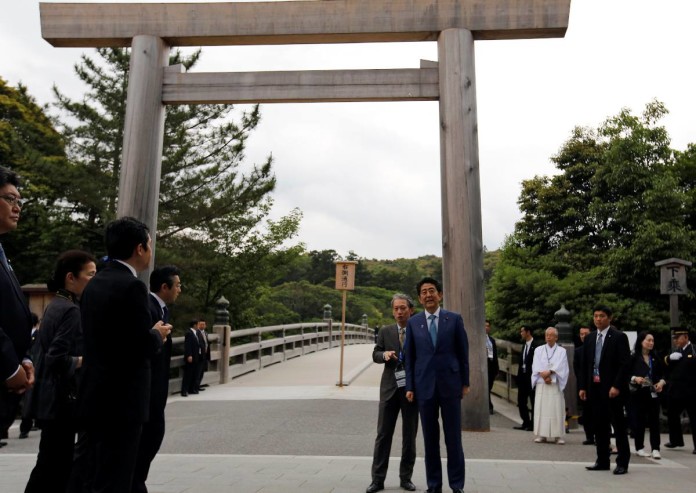JAPAN – Japanese Prime Minister Shinzo Abe on Wednesday made a pilgrimage to the Ise Grand Shrine, the holiest site in Japan’s Shinto religion, a day before he hosts a Group of Seven (G7) summit nearby.
Abe is expected to escort other G7 leaders including U.S. President Barack Obama to the expansive grounds of the shrine in central Japan on Thursday before they gather for the two-day annual meeting.
Abe, who like other Japanese leaders pays his respects at the shrine every January to mark the new year, has said the grounds are a good place to get a sense of the true Japanese spirit and culture.
Japanese wartime leaders used state Shinto ideology to mobilise the masses to fight World War Two in the name of a divine emperor, but Japan’s post-war constitution established the separation of church and state.
Abe sparked outrage in China and South Korea for his December 2013 visit to Yasukuni Shrine for war dead in Tokyo, seen in those neighbouring countries as a symbol of Japan’s past militarism.
Far less attention was paid to what some see as his equally symbolic participation in October that year in a ceremony at Ise Shrine.
The ritual is held every 20 years, when Ise Shrine is rebuilt and sacred objects representing the emperor’s mythical Sun Goddess ancestress are moved to a new shrine on the same grounds.
Abe became only the second premier to take part in the centuries-old ritual, and the first since World War Two, drawing attention to a conservative base that wants him to steer the nation back toward a traditional ethos mixing Shinto myth, patriotism and pride in an ancient imperial line. “He’s making these associations between his administration and sacred sites,” said John Breen, a professor at the International Research Center for Japanese Studies in Kyoto. “Ise is particularly important to him.” The shrine is made up of two main sets of buildings, the Inner and Outer Shrines. Abe will show the G7 leaders the Inner Shrine, dedicated to sun goddess Amaterasu Omikami.
Ordinary citizens can only view the buildings, said to hold religious articles such as a sacred mirror, from behind fences that leave only the rooftops visible.






